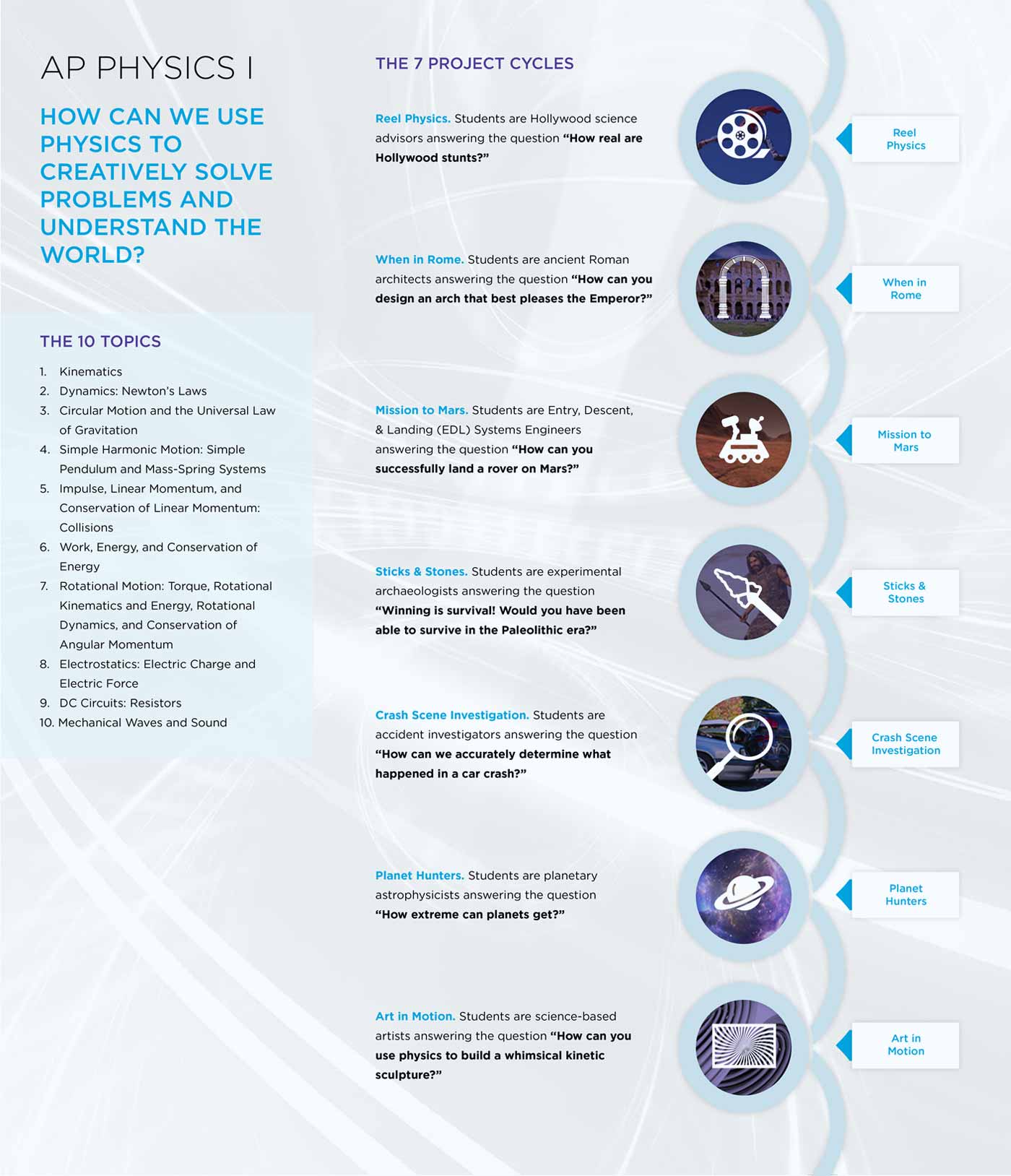Knowledge in Action
Overview
The purpose of the Knowledge in Action Project was to investigate the project-based learning approach as applied to rigorous high school courses, promoting depth of learning while continuing to cover essential content. The goal of these courses is to help students learn advanced content while engaging them deeply to see connections to their lives. The first two Knowledge in Action courses, AP U.S. Government and Politics and AP Environmental Science, were developed under the direction of Drs. Walter Parker, Susan Nolen, and John Bransford at the University of Washington. The design and study of the third Knowledge in Action course, AP Physics I, was led by Dr. Nancy Vye, also at the University of Washington.
Principal Investigator:
Developed under the direction of Drs. Walter Parker, Susan Nolen, and John Bransford at the University of Washington.The design and study of AP Physics I was led by Dr. Nancy Vye, also at the University of Washington.
Year of Funding:
2008-2017
Curriculum
Knowledge in Action: AP Government and Politics
This course contains five projects that are organized around the following question: “What is the proper role of government in a democracy?” Each project involves political simulations through which students take on roles that help contextualize the content required by the new College Board course framework.
In the first project, Founders’ Intent, students are delegates to the Constitutional Convention, deciding whether they would ratify the new U.S. Constitution. In the Elections project, students organize and execute their own presidential campaigns. Students then act as Supreme Court justices, petitioners, or respondents in landmark cases during the Supreme Court project. Students write legislation in the Congress project, exploring questions like “To what extent is Congress designed to make laws that reflect the will of the people?” The course culminates with Government in Action, during which students are advisors to interest groups and create political action plans, synthesizing what they have learned throughout the course.
Download the poster and print it for your class.
 Download this file (639 KB)
Download this file (639 KB) 
Download the poster and print it for your class.
 Download this file (639 KB)
Download this file (639 KB) Knowledge in Action: AP Environmental Science
This course contains five projects that are organized around the following question: “How can we live more sustainably?”. The projects highlight civic engagement, progressing from personal applications of the content to a focus on global issues such as climate change. The projects fulfill the same content requirements as a traditional AP Environmental Science course.
In the first project, Ecological Footprint, students calculate their ecological footprints and investigate the impacts of their families’ consumption habits. My Community Ecology extends this investigation by placing students in the role of community resource managers who investigate an actual site in their local community. In Food Systems, students are farmers who design a farm based on ecological and economic constraints. Oceans in Action takes place in a fictitious coastal community that is struggling economically, and students participate in a town hall meeting to debate the question of “How can we minimize our impact on ocean health?” Finally, Global Climate Summit brings the course together with students as United Nations representatives.
Download the poster and print it for your class.
 Download this file (941 KB)
Download this file (941 KB) 
Download the poster and print it for your class.
 Download this file (941 KB)
Download this file (941 KB) Knowledge in Action: AP Physics I
The seven projects in this course focus on the following question: “How can we use physics to creatively solve problems and understand our world?”. The curriculum aligns with the new College Board course framework and explores how people use physics in a variety of roles and careers.
In the first project, Reel Physics, students are science advisors to a Hollywood production company who evaluate films for physics accuracy and propose solutions to inaccurate representations of motion. When in Rome goes back in time so students can use the concepts of force, friction, work, and torque as ancient Roman architects. In Mission to Mars, students are engineers who must successfully land a rover on Mars for NASA. Sticks and Stones casts students as participants in a survival show set in the Paleolithic era who are faced with surviving by designing ancient hunting tools. Crash Scene Investigation and Planet Hunters are both investigation-oriented projects, in which students apply physics thinking as accident investigators and planetary astrophysicists. The course culminates in Art in Motion, during which students design kinetic sculptures and share them with the public.
Download the poster and print it for your class.
 Download this file (505 KB)
Download this file (505 KB) 
Download the poster and print it for your class.
 Download this file (505 KB)
Download this file (505 KB) 

